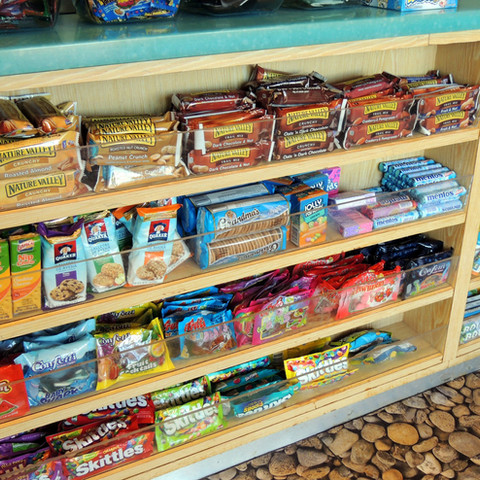Grains and Antinutrients
- Vicky Sham
- Aug 4, 2020
- 6 min read
Updated: Sep 14, 2020
I recently completed an elimination diet that removed sugar, alcohol, grains, legumes, dairy, preservatives and all sweet treats for 30 consecutive days. For sure, the Whole30 protocols were restrictive but I felt more energised and better nourished as I focused on fresh and minimally processed food. At this point, I'd like to clarify that the W30 is not a low carb or ketogenic diet because fruits and starchy vegetables are allowed, I have been able to fuel all my running with fresh food such as bananas, apples, sweet potatoes and melons.
Are Grains Healthy?
Most people can easily understand how quitting sugar, alcohol, dairy and preservatives can be good for our health. But why quit grains and legumes? Aren't they supposed to be healthy and full of minerals, vitamins and fibre? Where else can we get these nutrients if we avoid grains, beans and peas? First, let's make a distinction between refined and whole grains:
Refined grains - highly processed, refined carbohydrates in packaged foods found commonly in cereals, white bread, noodles, biscuits and pastries
Whole grains - healthier, less processed and more commonly found in traditional cooking such as tofu, quinoa, chickpeas
Refined and Whole Grains
Refined grains are problematic because they can cause our blood sugar and insulin to spike, leading to issues with hunger and satiety imbalance. Whole grains may be healthier because they don't cause the same blood sugar spikes and they retain nutrients within the bran and germ. Unfortunately these wonderful nutrients are not actually readily available for the human body to absorb.
Refined Carbohydrates
When we cut out grains, we likely remove all or most processed or refined carbohydrates from our diet. Note I will use "processed" and "refined" carbohydrates interchangeably. The obvious benefit of going grain-free is that we avoid highly processed foods like pizzas, donuts, pies, desserts, breaded fried food, but the real benefit comes in when we also limit the relatively "harmless" options like bread, pasta, cereals, and snack bars.
Even brown bread and wholegrain pasta are a lot more processed than most people think. Do you notice that bread, bagels and pasta look completely different from the wheat grown in the fields? If you are looking for more wholesome options, try to replace dense carbs (bread, pasta and rice) with whole fruits and root vegetables such as bananas, apples, oranges, sweet potatoes and squash. These "single-ingredient" food from plants contain plenty more vitamins, minerals and fibre and are much less processed than bread and pasta.

For those who want to shed a few pounds, replacing refined carbs with whole foods is one of the most effective, healthy and sustainable way to weight loss. Going down the whole food route can go a long way in regulating our blood sugar, insulin, and hunger and satiety hormonal balance. So you can stop feeling hungry all the time and wanting to snack like there is no tomorrow.
Interested in cutting out sugar and refined grains? Reach out for a free consultation and bounce some ideas with me.
Whole Grains
Even if you are careful to opt for gluten-free whole grains with more complex carbohydrates (e.g. quinoa, teff, beans, lentils), whole grains and beans may not be as nutritious as you think. There may be a lot of nutrients packed inside these grains, but the amount of nutrition available for our body is limited by the presence of antinutrients.

What Are Antinutrients? Antinutrients are toxins or enzymes inhibitors found in plants that block the digestion or absorption of nutrients in animals and humans. Some taste bitter, some have a soapy texture, others can cause reactions like stomach cramps, bloating, nausea and diarrhea.
Antinutrients protect plants and their seeds from predators, including humans. Since plants don't have arms to fight and legs to run away, antinutrients are plants' defence mechanism to protect their own species and their ability to reproduce.
Plant's Defence Mechanism Grains are seeds of grasses such as wheat, rice, corn, rye, oat, millet and barley. Legumes such as beans, lentils, chickpeas and peanuts are also seeds. Grains and seeds are plants' offspring so it is understandable that they don't want to be eaten by animals and humans. Unlike animals, plants cannot move or run away from predators. In order to protect their offspring (seeds), plants have defence mechanisms such as hard shells, thorns, spines, poison and antinutrients.

For example, cyanide is found in apples, apricots, cherries and peaches. The seeds are poisonous to humans, but you would have to chew large amounts of seeds or pits to be dangerous. Feel safe to continue eating these fruits as long as you do not chew the seeds by the kilos.
Seeds Dispersion
Interestingly, antinutrients enable plants to use birds and animals to spread their seeds across the forest. Some birds do not digest or absorb any nutrient from the seeds they eat. A great example are the Southern Cassowaries in Australia, these big birds (60kg) swallow fruits whole and let the poisonous seeds to pass through their digestive system intact. The seeds exit long with their dung and are spread throughout the rainforest, they then proceed to germinate and grow into trees. Some seeds won't even germinate unless they are activated by the fertilisers in the excrements.
Nutritious Grains Traditional diets and cultures have always valued grains and legumes because they are nutritious, rich in fibre, vitamins, and minerals. Plants store up these nutrients to help their seeds germinate and grow into adult plants. Antinutrients are basically there to help seeds resist digestion or absorption by predators. The seeds can move through our digestive tract and even use our poop as fertilisers!

All Down the Pan
Do you remember having corn on the cob and the kernels passing right through? This is antinutrients at work. We could have helped these plants spread their seeds, except that we no longer roam the land or forest like our ancestral hunters and gatherers.
Traditional Cooking
Fortunately, we have always known how to remove antinutrients. For thousands of years, humans have managed to extract nutrients from grains through extensive preparation and traditional cooking. Have you noticed how traditional cooking of grains and beans always involved soaking (lentils), sprouting (grains), roasting (nuts), high temperature cooking (kidney beans) and fermenting (soy sauce, tempeh, miso).
Types of Antinutrients
Phytates or phytic acid are found in the outer husks or shells of grains and legumes, as well as nuts and seeds. Phytates bind to minerals like iron, zinc and magnesium and reduce absorption by the body (up to 50% in the case of iron).
Lectins are proteins that bind to carbohydrate and resistant to our digestive system, even acidic conditions of the stomach. They bind to the cells lining the intestinal walls and interfere with absorption of iron, calcium, phosphorus and zinc.
Have you ever had an upset stomach, gas or bloating after eating kidney beans? It was likely caused by a type of lectins called phytohemagglutinin. Fortunately most lectins can be removed after thorough cooking at high temperatures (but not simmering at low temperatures).
Foods high in lectins include soybeans, wheat and nightshades (e.g. tomatoes, eggplants, potatoes).
Saponin are found in oats, quinoa and legumes. They can form a foam when shaken with water. Try rinsing quinoa and you will see some bubbles form. Saponin can bind and prevent absorption of nutrients. Fortunately, you can remove most of the saponin by thoroughly rinsing and cooking quinoa.
Protease inhibitors are found in grains and legumes, especially soybeans. As the name suggests, they inhibit the digestive enzymes protease and making it hard to breakdown protein molecules. These inhibitors can usually be deactivated through soaking, sprouting and boiling.

How to Remove Antinutrients Traditional preparation and cooking methods are the most effective at removing antinutrients. These include soaking, rinsing, sprouting, boiling, heating and fermenting. Some may require a combination of methods to remove most of the antinutrients.
Should We Eat or Avoid Grains? So here is the takeaway:
Avoid refined carbohydrates and processed grains - choose fresh food over packaged food.
If you still want to eat grains, opt for properly prepared whole grains as part of a well-balanced diet.
Say No to Refined Carbs - Choose Fresh Food Over Packaged Food With some attention, most of us can tell the difference between a health food and a hell food. Keep it simple, eat mostly fresh food that is sourced from a farm or the sea, not a factory. Any fresh food is better than packaged food. Fresh food (single ingredients) without a label is better than packaged food with 10+ ingredients, chemicals, preservatives, and a label that says "high in fibre", 'low-fat", "fortified with…".
If You Eat Whole Grains - Eat as Part of A Well Balanced Diet
I am not a fan of grains but I appreciate the merit of properly prepared whole grains as part of a balanced, traditional diet. Unless you are vegan or vegetarian, there is no reason to rely on whole grains and legumes for protein, fibre, vitamins and minerals. You can get the same and even better nutrition from a broad range of fresh vegetables, fruits, eggs, meat, fish and seafood.
If You Are Still Concerned....
If you have concerns about sensitivity or allergies against grains or legumes, or suspect you may have celiac or other autoimmune diseases, try an elimination diet for 2-3 weeks to identify which foods may be problematic. Even if it turns out you have no issues with grains (which is unlikely), you will learn how to eat with focus on nutrient density and can expect some positive changes to your dietary habits. You will definitely learn something about yourself. Here is my latest blog on the W30 elimination diet.
Hope you find the above useful. If you are interested in getting support to improve your health and wellbeing, I am here to provide some accountability and guidance. Get a free consultation now.






































Comments